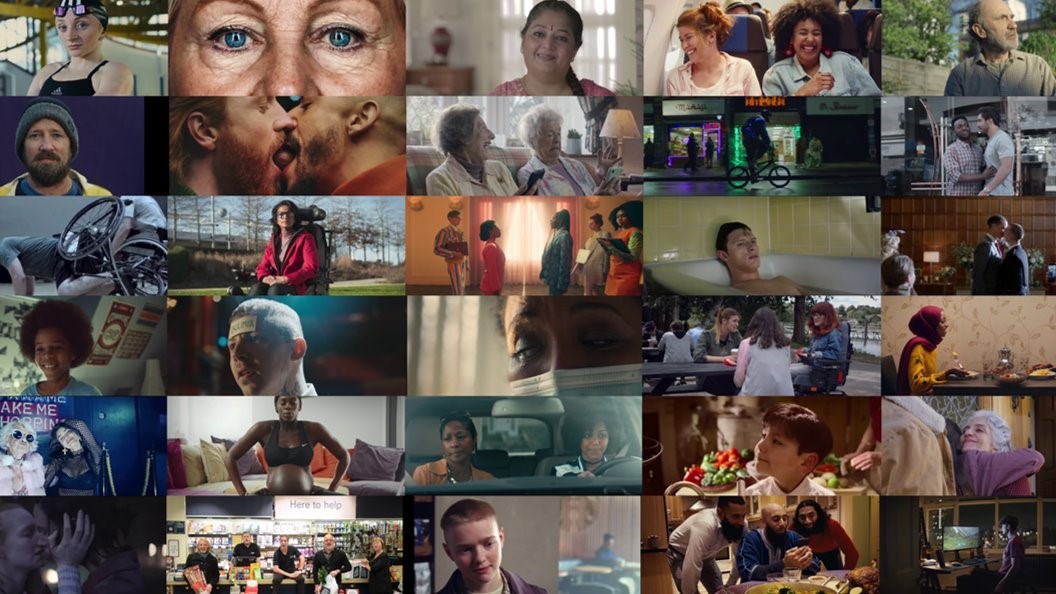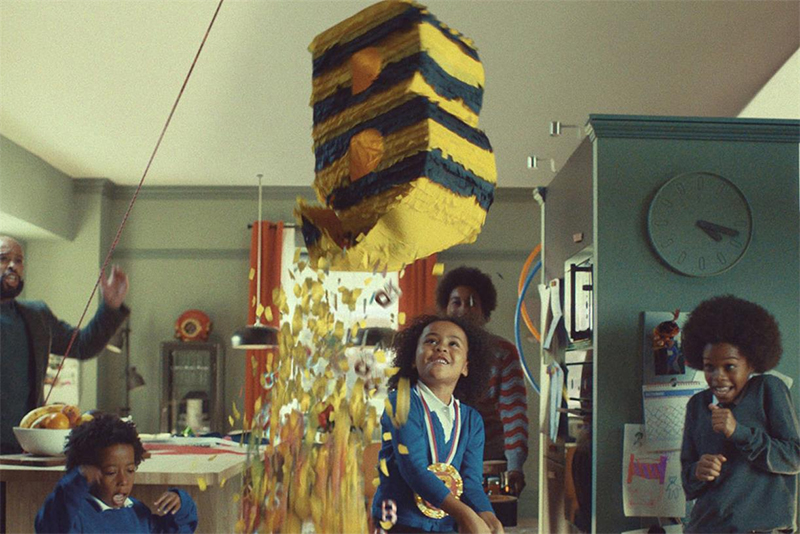If brands get it right, the future of diverse representation in advertising is an exciting prospect, says Kerry Collinge, Director of Marketing and Partnerships Europe at System1.
Black culture has been a source of inspiration for advertisers for decades, from the classic Levi’s “Launderette” ad’s use of Marvin Gaye’s “I Heard It Through The Grapevine” to Channel 4’s brilliant use of Public Enemy in its Paralympics ads. But although Black representation in UK advertising has sometimes been heard, it’s still rarely seen.
A lot of brands want that to change, with a focus on diversity on-screen that includes Black people. Although it’s far less rare now to see Black Britons star in adverts, it’s still distinctive enough that when a major brand casts a Black family in one part of a multi-ad Christmas campaign it’s treated as a salvo in a culture war.
In our recent Feeling Seen report, published in partnership with ITV and diversity specialists DECA, we tested some ads starring Black British people to learn the perspective of both the UK audience as a whole and a specially recruited Black British sample.

Nationwide’s “How Would Things Be Different?” is one such ad, part of its long-running campaign where people read poetry on camera – in this case the poet is Black rapper Melvillous.
Some viewers like the creativity, quirkiness and inspirational messages in these poetic ads. Others find them annoying. We see this range of response in full in the general population sample, for whom the ad is a 2-Star effort with fairly average emotional response, overall. For reference, System1’s 1-5 star rating predicts long-term brand growth and is based on the emotional response to an ad – viewers are asked what they felt about it and how strongly. Ads that resonate strongly and create positive feelings score higher and will generate more growth for brands.

But when we showed the ad to a Black British audience we got a very different response. The ad saw a huge uplift among the custom sample, jumping to 4.7-Stars – turning an average ad into a very strong one. The Black audience showed greater happiness and higher emotional intensity than the general one, and its key associations with the ad were emotional, not functional (“Positive” and “encouraging” rather than “Prize draw” and “bank”).

This repeats the pattern we saw in Feeling Seen – when diverse groups see people like themselves on screen, it has the potential to create a big uplift in their emotional response. This forms one of our key insights: that feeling seen, feels good. The message in Nationwide’s ad is not at all specific to Black people or the Black community – it’s on a more general theme of diversity and respect – but when it’s delivered by a Black man it cuts through for those viewers and they really respond to the ad.
That’s good news for Nationwide and other brands doing work in this space, but there’s a tricky underlying problem. The Black audience is important, but small, and among the general population this is still an underwhelming ad. Which leads us to our second key insight: diverse advertising unites us… to a point.
It’s important to note that the ad doesn’t underperform among the wider audience because it stars a Black person. We know this because we can see Nationwide’s other ads in the campaign, some of which score much higher - and one of their top scoring poetry ads is from Sugar J Poet, another Black British writer.
So we know the uplift for Melvillous’ ad is what we called a “Diversity Dividend” in Feeling Seen – a genuine effectiveness bonus created by inclusion. But what we also saw in Feeling Seen is that the better the ad performs among a general population, the more effective it is among diverse groups too. The point isn’t to choose between resonant, inclusive advertising and wider appeal – you can have both.
In the case of this ad, the issue isn’t the poem, but its setting. Reciting his verse while sat on a lonely hilltop means Melvillous feels like a detached figure and the ad loses dynamism and connection. It’s crucial to celebrate black lives and black culture, our third key insight in the report, however, it would have likely scored higher if he’d delivered it in a more vibrant environment, like a busy street. This point is one made strongly by Orlando Wood in his new IPA book Look Out (the follow-up to Lemon) – as society emerges from the Covid-19 pandemic, advertisers need to emphasise connection, community and wholeness, not lonely detachment.
Our fourth key insight proved that we might be seeing different people but it’s the same set of rules. Get the story, characters, music, fluent devices and other executional details right – so you make a great ad that’s also diverse, not a diverse ad you hope turns out great. Take IKEAs ‘Wonderful Everyday’ – this ad could have been made with any British family – this one happens to be Black. And the difference in emotional response when we showed it to a Black British sample is remarkable, and exists because of that easy-going normality. “It was nice to see a Black family celebrating their daily wins with no focus on trauma. Just a Black family having fun”, as one participant said.

Among the general population this scores just short of 3-Stars – typical for the IKEA campaign, whose surrealism delights some but turns others off. But for Black viewers the ad scored in the top bracket, with 5.2-Stars. The simple fact of seeing an ordinary Black family on screen was enough to create far more positive response – testimony to the benefit of feeling seen.

It’s also important to stress that ‘diverse’ is not an identity. Diverse groups don’t think or act as one – it’s better to tell someone’s story well than try and tell everyone’s story badly. Within “Black British” there are very many layers and this needs to be fully understood in order to achieve effective representation.
We presented these findings in a recent webinar to highlight the importance of authentic representation and the benefits this yields for business growth and short-term sales.

